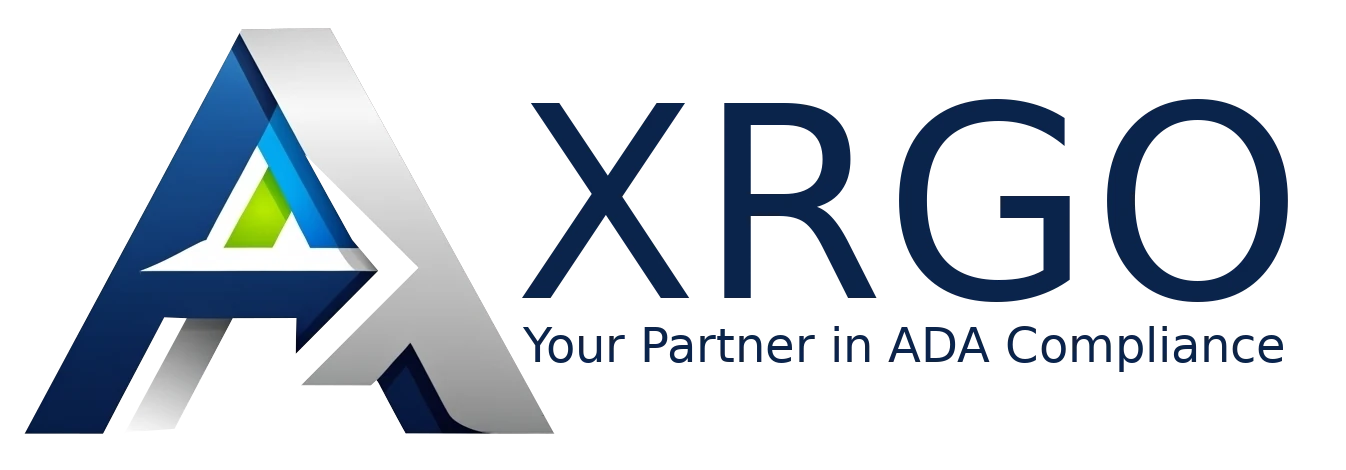In today’s digital economy, a business’s website is more than a marketing tool — it’s often the first point of contact with customers, the primary sales engine, and, increasingly, a legal liability. Across the country, lawsuits alleging violations of the Americans with Disabilities Act (ADA) have surged, targeting businesses whose websites fail to meet accessibility standards.
While many attorneys are prepared to defend clients against employment claims, contract disputes, or regulatory compliance issues, fewer are proactively counseling clients on the silent threat posed by their websites. For attorneys representing businesses of all sizes — from local shops to national corporations — ADA website compliance is no longer optional. It’s a rapidly expanding field of litigation, and ignoring it could expose clients to unnecessary lawsuits and reputational harm.
This blog post unpacks why ADA compliance has become a pressing legal issue, what attorneys must understand about web accessibility, and how you can position yourself as a trusted advisor by helping clients identify and mitigate this hidden risk.
The Rising Tide of ADA Website Lawsuits
Over the last decade, the number of ADA Title III lawsuits related to websites has grown exponentially. Federal filings increased from just over 2,000 in 2018 to more than 4,000 in 2023 and that doesn’t include thousands of demand letters and state court actions that never make headlines.
High-profile cases such as Robles v. Domino’s Pizza established that websites and mobile apps are subject to the ADA. Courts have consistently ruled that digital platforms are “places of public accommodation,” meaning businesses have a legal obligation to ensure that people with disabilities can access their online services.
Plaintiffs’ attorneys have seized on this opening, launching suits against businesses large and small. The trend is not limited to Fortune 500 companies; family-owned restaurants, dental practices, and boutique retailers have all been sued.
For attorneys, the lesson is clear: ADA website compliance has moved from a niche issue to a mainstream risk that every business client must confront.
Why This Risk Is Greater Than Clients Realize
Business owners often underestimate the scope of ADA obligations. They may believe accessibility only applies to their physical premises ramps, signage, or accessible restrooms. Few realize that their websites are subject to the same legal scrutiny.
Here’s why this digital risk is so pervasive:
- Low Barrier for Plaintiffs
Filing an ADA website claim requires little more than visiting a site with assistive technology (such as a screen reader) and documenting barriers. This makes it relatively easy for plaintiffs to bring cases, often using standardized complaints across multiple defendants. - High Cost of Non-Compliance
Even when cases settle quickly, legal fees, remediation costs, and potential damages can add up. Small businesses that can’t afford protracted litigation often agree to settlements ranging from $10,000 to $50,000. - Reputation at Stake
Beyond the financial burden, ADA lawsuits can tarnish a company’s public image. Accusations of discrimination, even when unintended, can damage trust with customers and partners. - Expanding Legal Standards
The Department of Justice (DOJ) has made it clear that it views websites as subject to the ADA, and the Web Content Accessibility Guidelines (WCAG) are increasingly accepted as the de facto standard. What’s “good enough” today may not withstand scrutiny tomorrow.
For attorneys, this creates a dual challenge: ensuring clients understand the urgency while also helping them navigate a complex, evolving compliance landscape.
Common Website Accessibility Pitfalls
To effectively advise clients, attorneys should be familiar with the most common accessibility barriers that trigger lawsuits. These issues are often invisible to business owners but glaring to users with disabilities and to plaintiffs’ attorneys.
- Missing or Inaccurate Alt Text: Images without descriptive text prevent screen readers from conveying meaning to visually impaired users.
- Poor Color Contrast: Text that blends into the background is unreadable for people with low vision.
- Unlabeled Forms: Input fields without labels confuse users relying on screen readers.
- Keyboard Navigation Failures: Some sites trap users who navigate via keyboard rather than a mouse.
- Videos Without Captions: Deaf or hard-of-hearing users miss essential content.
- Dynamic Content Without Accessibility Features: Interactive menus, popups, or sliders often break accessibility.
While technical in nature, these issues are legally significant because they effectively “lock out” users with disabilities, constituting discrimination under the ADA.
The Attorney’s Role: From Defense to Prevention
Too often, attorneys are brought in after a lawsuit is filed, tasked with damage control. But proactive counseling is where attorneys can add the greatest value. By educating clients on ADA website risks and encouraging preventative measures, you can:
- Mitigate Legal Exposure
Helping clients audit and remediate their sites reduces the likelihood of lawsuits. - Demonstrate Foresight
Clients appreciate attorneys who flag emerging risks before they escalate. ADA website compliance is a prime opportunity to show that you’re looking out for their best interests. - Build New Revenue Streams
Advising on ADA compliance can become a value-added service, whether through risk assessments, compliance checklists, or partnerships with accessibility consultants.
Best Practices to Recommend to Clients
While attorneys don’t need to become technical experts, having a working knowledge of best practices enables you to guide clients toward compliance. Consider advising clients to:
- Conduct an Accessibility Audit: Recommend third-party audits or automated scanning tools to identify issues.
- Adopt WCAG Standards: Encourage clients to align with WCAG 2.2, Level AA, the most widely accepted compliance benchmark.
- Create an Accessibility Statement: A public-facing statement demonstrates good faith and commitment.
- Implement Ongoing Monitoring: Websites evolve, and compliance should be regularly reviewed.
- Integrate Accessibility into Vendor Contracts: Ensure web developers and marketing agencies are contractually obligated to deliver accessible products.
By framing these steps as risk management rather than technical chores, attorneys can help clients see accessibility as both a shield against litigation and an opportunity to expand their market.
The Business Case for Accessibility
Clients may be more receptive when they understand that accessibility is not just about avoiding lawsuits. Accessible websites:
- Expand Market Reach: One in four U.S. adults has a disability, representing significant purchasing power.
- Boost SEO: Search engines reward many accessibility best practices, such as descriptive alt text and clear heading structures.
- Enhance Usability for Everyone: Features like captions and high-contrast text benefit aging users and mobile visitors as well.
When attorneys connect ADA compliance to both legal risk reduction and business growth, clients are more likely to act.
The Cost of Ignoring Accessibility
Attorneys should be candid with clients about the potential costs of inaction:
- Litigation Expenses: Settlements often exceed the cost of remediation.
- Repeat Lawsuits: Businesses that fix only some issues or ignore accessibility altogether may face multiple claims.
- Regulatory Action: As the DOJ increases its enforcement efforts, fines and penalties may follow.
- Lost Opportunities: Competitors who embrace accessibility gain goodwill and market share.
Framing accessibility as both a legal obligation and a competitive necessity helps clients weigh the cost of compliance against the far greater cost of neglect.
The surge in ADA website lawsuits is more than a passing trend — it’s a permanent shift in the legal landscape. For attorneys, this represents both a risk and an opportunity. By proactively advising clients on accessibility, you not only shield them from litigation but also help them unlock business value through inclusivity and trust.
The silent lawsuit may be waiting on your client’s website. Your role is to make sure they hear the warning before it arrives in the form of a demand letter or a summons. ADA compliance is no longer a technical issue to be delegated — it’s a legal and strategic imperative.
Frequently Asked Questions
Yes. Courts have ruled that websites of businesses considered “places of public accommodation” under Title III of the ADA must be accessible to individuals with disabilities.
The Web Content Accessibility Guidelines (WCAG) 2.1 or 2.2, Level AA, are widely accepted as the industry benchmark. While not codified into U.S. law, they are referenced in settlements, DOJ guidance, and case law.
While retail, hospitality, healthcare, and education are common targets, no sector is immune. Even small businesses like local restaurants and law firms have been sued.
No. Lack of awareness is not a defense. Courts expect businesses to make reasonable efforts to comply.
Accessibility remediation may cost anywhere from $3,000 to $20,000, depending on the site’s complexity. Litigation and settlements often cost multiples of that, not including attorney fees and reputational harm.
Yes. A clear statement shows good faith and outlines steps being taken, which can mitigate risk and build trust.
Attorneys should advise clients of their obligations, encourage proactive compliance, and ensure contracts with vendors include accessibility requirements. While technical fixes fall to developers, attorneys provide the legal framework and risk assessment.



Comments
Log in to add a comment.